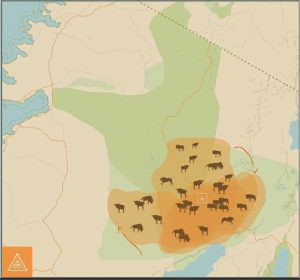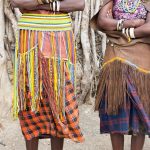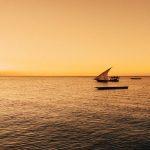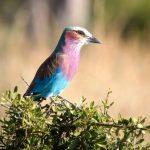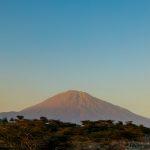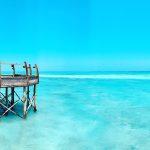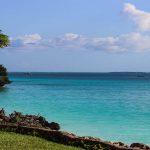Where are the herds in March?
At the beginning of the month, many herds are still in the Ndutu area of the Ngorongoro Conservation Area and the southern Serengeti plains, and though January and February are technically the calving season months, it often continues well into March. Even if calving season is mostly over, the chances are the herds will linger in the nutrient rich grasses of the southern plains.
If you are travelling in the beginning two weeks of March, we would therefore suggest basing yourself in a mobile camp in this area, as you would in January and February. Towards the end of the month, Tanzania’s heavy rains can begin, which means the wildebeest disperse, often covering more ground out to the west towards Maswa Game Reserve, and around the Moru Kjopes (just south of the centre of the park) and on to the western Gol region. Towards the end of the month, you could look at combining locations; one camp in the Ndutu area and another just south of the Seronera region in either Moru (south, towards the east of centre) or Namiri (south west of centre) for your best chances of catching the herds.
If you are looking to see the mega herds, we would therefore suggest visiting at the beginning of the month, rather than the end. Going in March could mean you may get wet as the rains are sometimes early (and sometimes late!), but if you don’t mind getting a bit stuck in the mud and aren’t looking for a Zanzibar beach extension, this can all be part of an unforgettable adventure.
Is March a good time to see the Great Migration?
Yes! In our view, March is an excellent time to visit for a few reasons. Firstly, you avoid the peak season prices of February, and the chances are, if you are going at the beginning of the month you will get a very similar experience. Going in March also means you avoid the crowds, especially at the end of the month. If you really want a Serengeti safari all to yourself and don’t mind if you potentially get a bit wet, a March safari is for you. If your absolute focus is on seeing the huge Migration herds, you don’t want any rain, and you don’t mind paying a premium then consider February…. Though we are convinced that for a fraction of the cost, and early March safari is definitely worthwhile.
So, where should I stay to get the best chance of catching the herds in March?
In the first half of the month, stay in the Ndutu region of the Ngorongoro Conservation Area, and the southern Serengeti plains. In the second half of the month, if you have a short time do exactly the same as in the first few weeks. If you have a bit longer though, it may be worth combining a camp in the Ndutu area, with one around the Moru Kjopes, Namiri Plains or Central Serengeti. Both Ndutu and these more central areas have phenomenal resident wildlife.
Which mobile camps to stay at for a March Serengeti safari in Ndutu?
Mid range mobile camps
Chaka ($330 pppn). Very comfortable accommodation and an excellent overall experience in great locations, at an amazing price; you can’t go wrong with Chaka for a basic yet authentic Serengeti Migration safari.
Barefoot luxury mobile camps
Serengeti Safari Camp ($725 pppn after 15th March, $900 pppn before 15th March). An office favourite. Moving between 3 locations throughout the year and with 2 mobile camps, Nomad Tanzania’s passion of exceptional safaris shines through in everything they do… Safari mad but without compromising on quality one little bit, Serengeti Safari Camp is unbeatable for an authentic Serengeti safari.
Ubuntu ($664 pppn) Asilia’s best value mobile camp, Ubuntu is similar in style to Serengeti Safari Camp and in an equally excellent location at this time of year. A fabulous choice for a barefoot luxury tented safari experience.
Alex Walker’s Serian ($1,110 pppn but 4 for 3 nights deal) – Luxurious food, service and tents but with a really classic safari style. A huge perk of Serian is that your price includes a private vehicle and guide for your whole stay. Serian has two camps at this time of year, one in the Kusini region of southern Serengeti (Serian Kusini, to the slightly north and west of Ndutu) and another even south of this, deep into the Ngorongoro Conservation Area called Serian South. In March, either are excellent locations to catch the herds from. One thing to consider is that Serian South is not in the national park which means you can enjoy walking, cultural visits as well as fly camping…
Very luxurious mobile camps
Serengeti Under Canvas ($885 pppn) &beyond’s Serengeti mobile camp, this is a very luxurious tented option and for those who don’t mind splashing out on a premium experience.
Olakira ($789 pppn). Asilia’s most luxurious mobile camp, Olakira has a similar feel to Serengeti Safari Camp but aimed at slightly more luxury-loving audience. Whilst SSC is barefoot luxury, Olakira is barefoot luxury with sandals on!
More central camps to potentially combine with a mobile one in late-March
Kimondo ($742 pppn). Kimondo is a mobile camp but is uniquely located in the Kusini area of the Serengeti, and is therefore exceptionally well placed for the end of the month especially. Combine this with a mobile camp in Ndutu and you have an excellent chance of catching the migration.
Kiota ($325 pppn). As Chaka’s sister camp, this is an exceptional value property. Located in Seronera, with amazing views of the surrounding plains, it is exceptionally well positioned for the excellent central Serengeti resident wildlife. It is very comfortable with lovely staff and a very welcoming atmosphere.
Namiri Plains ($893 pppn). Namiri Plains is one of the best locations in the whole of the Serengeti in our view, migration or no migration. It is set in the eastern area of the park and with only one other camp in its vicinity, hardly any vehicles venture here. This does not mean its wildlife is less prominent by any means, but quite the opposite. As a former cheetah conservation area the big cats here are extremely good. Fine food, luxury tented accommodation in a magical area; you can’t get much better than this.
Dunia ($804 pppn). Another Asilia property, and one which we love to send couples and families alike to – it suits everyone, and the all-female staff create an incredibly welcoming and warm environment. Exceptionally well positioned in a quieter area of the Seronera region, with it’s excellent resident wildlife, it is a fantastic choice.

